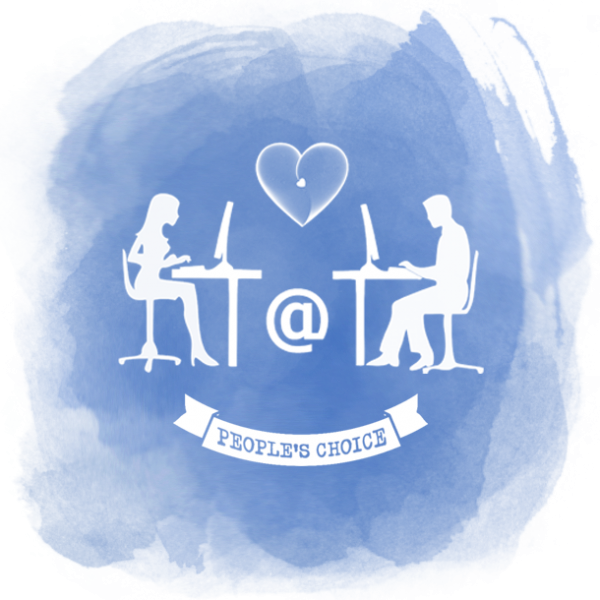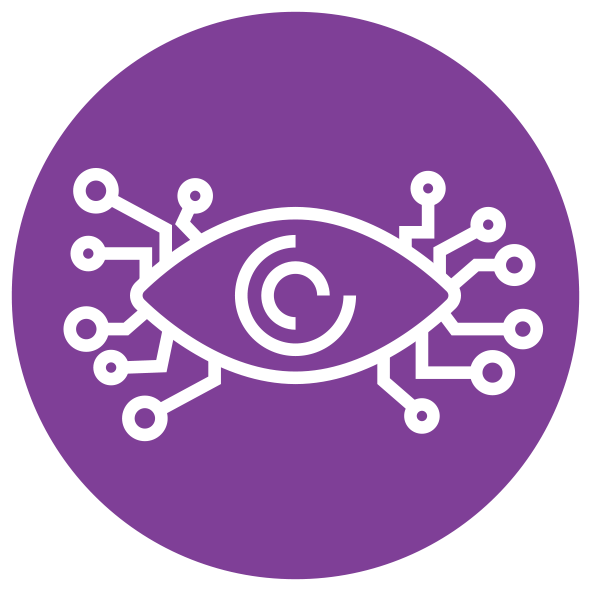Submitted by Lily Turaski
on December 01, 2017

QUANTUM SHORTS 2017: PEOPLE’S CHOICE PRIZE
>> Read an interview with the author
Bzzt. My phone vibrates on the desk, and I glance up from my textbook. A message from my granny flashes on the screen. “Do you know any good jokes about Fortran?” Not really. Wonder why she wants jokes about Fortran? Bzzt. Another message from Granny. “I’ve got a date tomorrow with a guy who did Fortran programming.” Ah, that explains it. My granny has recently been exploring the exciting world of Online Dating. Somehow it seems she always gets paired with nerdy engineering types. At least she’s getting dates . . . might be time for me to give online dating a try as well.
“Sorry, no Fortran jokes. Btw, would you help me set up a dating profile?”
“Of course, sweetie. My, how the times have changed! My granddaughter is asking me for computer help!”
Smiling, I resume my studies. I’m taking a modern physics class, and we are learning about the hypothetical quantum particles known as Tachyons. If they exist, they have the potential for superluminal motion. It’s fun to think about the possible application to time travel. If you can travel faster than light, then you can travel forwards and backwards in time . . . all it would take is one scientist with the faith to take the chance on a new idea.
I visit my granny that weekend, and together we make my profile, laughing as we fill out the questionnaire. “Now,” she says, “all that’s left is to wait and see who is revealed as your match.” I wonder how the computer determines pairings. Computers operate on a binary system. There are only two possibilities: yes or no. What if the computer makes the wrong choice, and rejects my one true soulmate?
We play a game of chess, but as each of us perfectly anticipates the other’s moves, it ends in a draw, and I return to campus. I spend the night dreaming of blueprints for a time machine, and I am greeted the next morning by an email written in flowery script:
~Congratulations! You have a new match!~
And he seems perfect, and he wants to meet me on Thursday, and I’m so excited I’m no longer thinking in complete sentences. I text Granny the good news.
“Wow, that’s fantastic!” She says, “I’m going out on Thursday as well! The fella I’m going with better be more impressive this time because he’s already got one strike against him.”
“What happened? Why did you put Fortran Man on probation?”
“Oh, he thought Patrick Henry was one of the U.S. Presidents.” Ah, that’ll do it.
Granny arrives spontaneously at my dorm on Thursday afternoon. “Good heavens, is that what you’re wearing? That frumpy dress will never do, sweetie. Good thing I thought ahead. You can wear this; it’s what I wore when I was dating in college.” I smile and take the proffered clothing, which is still in fashion. Granny always has timeless taste.
The evening finds me laughing and smiling, and I realize that if my future self develops a method for time travel, this is the moment to which I would return. It seems the computer knew what it was doing when it said “yes” to this charming guy. I glance beside me, and see Granny sitting with her date at the table next to us. How had I not noticed them before? I wave happily.
“Oh, do you see someone you know?” My date wears a puzzled expression.
“That’s my granny on her date!” I explain, turning to introduce them. But when I turn, I am greeted by the window and a perfect reflection of myself. Granny is nowhere to be seen, and I shake my head, confused.
“Aw, that’s sweet. Tell me about your granny.” Hearing this, I snap back to the present.
“Well, she’s amazing. She also studied engineering here on campus, and then she did research at the national lab. I don’t know any details because it was super-secret, but I think it was related to superluminal motion. You know, I’ve been studying that recently– the application to time travel is fascinating! Anyway, my granny, she’s a big nerd, and she loves to play chess, and sing, and dance, and ride horses, and she grew up on a farm with pet chickens and goats, just like me. Granny and I have so much in common, it’s almost like we’re twins!” I laugh. “So, tell me about your work?”
“Well, I’m studying to be a computer engineer, and recently I’ve landed an internship programming medical devices using Fortran. Your granny sounds like an amazing person; maybe I’ll have the honor to meet her someday.”
“In that case, you should know she’s peculiar about history, so make sure you know your presidents.”
I went home that night humming a happy tune. Bzzt. My phone vibrates; Granny wants to know how it went, and I eagerly dial her number. We both gush about our evenings, as it appears Granny had a lovely time with Mr. Fortran Man.
“I thought he was on probation for the whole Patrick Henry fiasco?”
“Oh, turns out he was joking. He’s memorized all the presidents, their running mates, and terms of office. Apparently, when he was in college, he went out with a girl who recommended he memorize the presidents if he wanted to impress her grandmother! Ha! But anyway, sounds like you had a great time; I know it’s only the first date, but do you think he could be The One?”
“Well Granny, I’ve got a 50% shot. After all, there are only two possibilities: yes or no.”
“Ah, leaving your soulmate to the toss of a coin. I hope you make the right choice, sweetie.” And then, quietly, wistfully, she adds, “I hope you make the right choice this time, because the alternative is a much lonelier timeline. Choose wisely . . . for both of our sakes.”
About the Author:
Lily studies Materials Science Engineering at Georgia Tech where she brings her own flavor of quarky nerdiness to campus. She won the 2015 People’s Choice Award and is thrilled to have her superposition sentence emulated in so many alternate realities in the entries of Quantum Shorts 2017.



